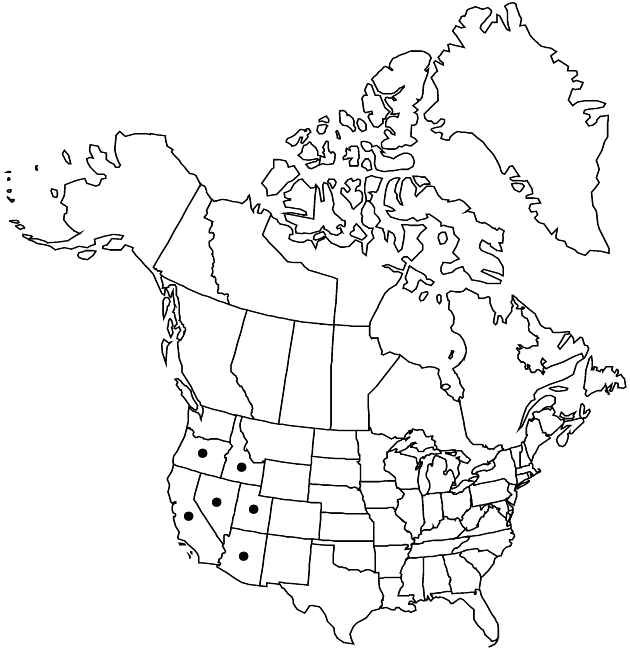Chaenactis macrantha
in S. Watson, Botany (Fortieth Parallel), 171, plate 18, figs. 1–5. 1871.
Plants 5–25(–35) cm; proximal indument grayish, arachnoid-sericeous to closely lanuginose (sometimes tardily glabrescent). Stems mostly 1–5; branches mainly proximal. Leaves basal (withering) and cauline, 1.5–7 cm; largest blades ± elliptic to ovate, ± plane, not succulent, 1(–2)-pinnately lobed (± gland-dotted beneath indument); primary lobes mostly 2–5 pairs, ± remote, ultimate lobes ± plane. Heads (± radiant, nocturnally), mostly 1–5(–7) per stem (nodding in bud). Peduncles 1.5–8 cm, arachnoid-sericeous to thinly lanuginose distally, not stipitate-glandular. Involucres ± obconic to broadly cylindric. Phyllaries: longest 12–18 mm; outer arachnoid-sericeous to thinly lanuginose in fruit, not stipitate-glandular, apices ± squarrose, blunt, pliant. Florets: corollas (nocturnal) white to pinkish or cream, 9–12(–15) mm (lengths 1.8–2.2 times cypselae; anthers ± included); peripheral corollas nocturnally spreading, actinomorphic, scarcely enlarged. Cypselae 5–6(–7) mm; pappi of 8 scales in 2, abruptly unequal series, longest scales 5–7 mm. 2n = 12.
Phenology: Flowering Mar–early Jul.
Habitat: Open, loose, light-colored, silty, usually calcareous or alkaline, desert soils, often covered by or mixed with gravel
Elevation: 600–2200 m
Distribution

Ariz., Calif., Idaho, Nev., Oreg., Utah.
Discussion
Though the derived floral features of Chaenactis macrantha obscure its relationships, it may represent a link between sect. Chaenactis (annuals; pappus scales in regular, often strongly reduced series) and sect. Macrocarphus (leaf blades gland-dotted). Resemblance of its heads, leaves, and indument to those of C. thompsonii and relatives is striking. It appears to form no natural hybrids, perhaps because of its nocturnal corollas.
Selected References
None.